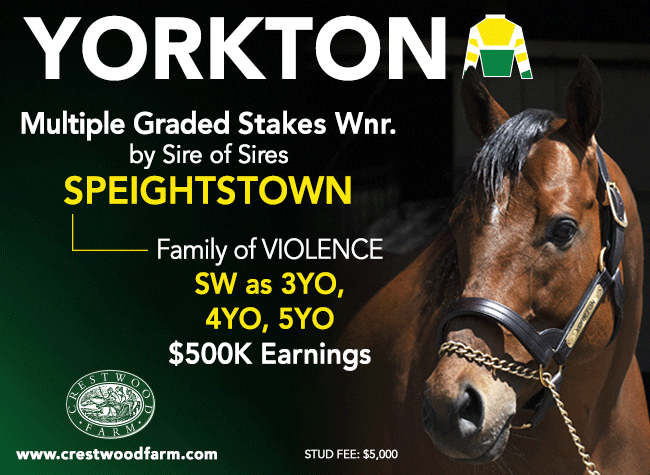Abel Tasman (Quality Road), Beholder (Henny Hughes), Stephanie's Kitten (Kitten's Joy), Plum Pretty (Medaglia d'Oro), Stellar Wind (Curlin) and Flower Alley (Distorted Humor). These names are recognizable champions, classic winners, and high-profile Grade I winners. Another common thread they all share is they were bred during their respective sires' third season, on stud fees ranging from $12,500 to $40,000. It took their breeders' confidence, gumption, and desire to not just go with the status quo and avoid young sires that were in their “bubble years.”
Breeding Thoroughbreds is a long-term commitment and it takes patience; this key fundamental principle will never change. No one will deny that it has become more and more difficult to sell studs in their third or fourth season with the extreme polarization towards the super expensive or first-year stallions. This is one reason why it is so crucial to a young stallion's career to surround him with an excellent syndication of breeders who will support him not only in his first season but throughout his young career in years two, three, and four.
At WinStar, this is a great focus of ours when we retire a new stallion. We have been fortunate to have top breeders domestically and internationally choose to invest in our stallions, and with that commitment and dedication, our young stallions receive a great foundation that makes it possible to keep their numbers competitive during their early crops.
The significant trend of breeding for results in the sales ring rather than results on the racetrack has been a large contributor to the struggle of selling third and fourth-year stallions. Rigid programs based on popular first-year stallions, first foal or yearling averages, or those deemed “commercial” enough, leave third and fourth-year stallions off of many breeders' lists. Regardless of whether a stallion would be the perfect match physically, or the mare's family has had success with the sire line, these matings are being overlooked because the program does not allow for breeding to a “bubble” stallion. This limitation in a breeding program removes much of the imagination and creativity that has always been a key ingredient in mating Thoroughbreds.
Breeders should never be afraid of a good mating, because that's where champions come from.
Not a subscriber? Click here to sign up for the daily PDF or alerts.






